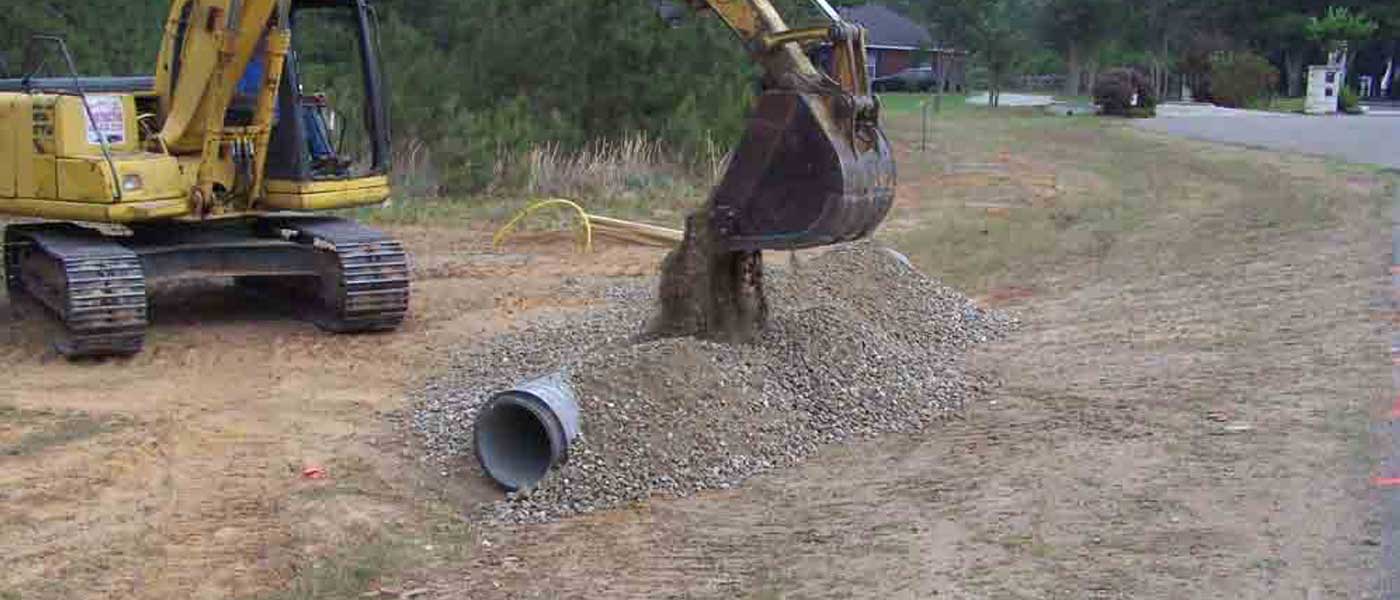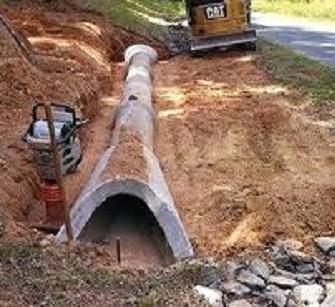Seasoned Tree Removal for Property Security
Seasoned Tree Removal for Property Security
Blog Article
Mastering Culvert Installment: Increase Your Land Drain Efforts
Effective land drainage is a vital component of successful agricultural and facilities projects. Culverts play a significant duty in handling water flow and preventing erosion, making their appropriate installment important. From picking the appropriate products to carrying out best techniques, understanding culvert installment can substantially enhance the performance and longevity of your land water drainage system. By recognizing the intricacies of culvert installation, you can maximize your water drainage initiatives and guarantee sustainable land use methods.
Relevance of Culvert Setup
Making sure correct culvert setup is paramount for maintaining efficient land drain systems. Culverts play a vital role in taking care of water flow, stopping erosion, and keeping the structural integrity of roads, bridges, and other facilities. Appropriate installment of culverts assists to transport water far from roads and structures, reducing the risk of flooding and water damage. Furthermore, well-installed culverts help in stopping sediment build-up, which can lead to obstructions and reduced water flow.
Correct Sizing and Positioning

Proper positioning of culverts is equally crucial. Culverts should be positioned at the lowest point of the location calling for water drainage to make sure efficient water circulation.
Material Choice Tips
Picking the appropriate materials is extremely important in guaranteeing the resilience and functionality of culverts for effective land water drainage systems. When selecting materials for culvert setup, it is critical to take into consideration elements such as the water flow price, dirt structure, and ecological conditions of the website.
Among one of the most common materials used for culverts is corrugated steel (Tree removal). Corrugated steel culverts are sturdy, affordable, and very easy to set up. They appropriate for locations with high water circulation rates and can hold up against heavy tons. An additional prominent option is concrete culverts, which provide excellent toughness and durability. Concrete culverts are ideal for areas prone to deterioration or when a much longer life span is preferred.
For environmentally sensitive locations, plastic culverts may be look at here now favored. Additionally, in locations where all-natural aesthetic appeals are essential, materials like stone or wood can be used to create culverts that mix perfectly right into the surroundings.
Setup Techniques and Finest Practices
Given the important importance of material option in making certain the performance and long life of culverts, the setup methods and finest practices play an essential duty in the overall success of land water drainage systems. Proper installation is key to preventing problems such as leakages, breaks down, or obstructions that can compromise the effectiveness of the culvert.

During installation, treatment needs to be taken to align the culvert appropriately and provide correct support to protect against deformation. Backfilling must be done gradually and compacted in layers to prevent spaces and settlement. Proper compaction is vital to avoid moving or sinking of the culvert gradually.

Maintenance and Long-Term Treatment
Implementing a thorough maintenance plan is crucial for ensuring the longevity and efficient efficiency of culverts in land water drainage systems. Normal Web Site assessments must be conducted to inspect for any indicators of damages, blockages, or erosion that could jeopardize the performance of the culvert. Clearing debris such as leaves, branches, and sediment is crucial to stop obstructing and maintain the flow capability of the culvert. Greenery control around the culvert area is additionally vital to stop origins from creating structural damages.
Routine upkeep jobs may consist of cleansing, fixing joints, enhancing inlet and outlet structures, and guaranteeing appropriate incline and positioning of the culvert. Maintaining detailed records of upkeep activities, assessments, and repairs is crucial for tracking the condition of the culvert over time and preparing future maintenance requirements.
Verdict
To conclude, grasping culvert setup is vital for reliable land water drainage. Correct sizing, positioning, product choice, setup strategies, and maintenance are essential variables to consider. By adhering to ideal techniques and executing lasting treatment approaches, landowners can improve their drainage initiatives and guarantee the long life and capability of their culverts. It is important next page to focus on these aspects to stop water damages, erosion, and various other costly concerns on the residential property.
Report this page